Now leaving from platform 1
Wednesday | August 19, 2009 open printable version
open printable version
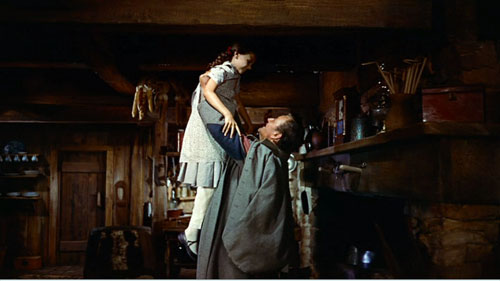
From a Facebook post by Tahereh
To all my friends:
What can I reply to Hossein? He’s pursuing me so avidly, but you know he isnt really a prime catch. No education, no house. If it werent for the earthquake, I wouldnt give him a second look. But he does interest me a little—he’s made me lose track of my lines so many times!
Oh no, now he’s chasing me across the field. What can I tell him? BRB!
DB here:
Many people in the film industry hold media studies in disdain, and often the feeling is mutual. Filmmakers recoil from the abstrusities of Big Theory, and academics often consider filmmakers gearheads (just before wagging their fingers and warning us about the Intentional Fallacy). But scholars like Rick Altman, John Caldwell, Janet Staiger, Kristin, and me, and younger folks like Patrick Keating and Ben Wright have been trying to study filmmakers’ creative choices in concrete ways. Some of us even ask filmmakers what they were trying to do.
So it’s heartening to see movement in the other direction. For quite a while academically trained filmmakers like James Schamus and Todd Haynes have brought ideas from their university studies into their films. Recently Reid Rosefelt composed an enlightening blog entry on Kathryn Bigelow’s intellectual side. Now some terms and ideas are being spread even more widely across the industry.
For example, in a recent Entertainment Weekly story about why women viewers like horror, we read:
One of the most consistent tropes of the genre is the character whom filmmakers call ”the final girl” — the survivor.
Actually, it was Carol Clover, scholar of horror movies and Scandinavian epics, who came up with the “final girl” nickname in her book Men, Women, and Chainsaws. Going back to the EW sentence, you notice that academics helped popularize the term genre too, which you seldom find in Hollywood’s patter before the 1970s. And the very word trope smells of classrooms and chalkdust.
Even more striking is a recent Variety article entitled, “Transmedia Storytelling Is Future of Biz.” Peter Caranicas explains that it involves “developing a piece of intellectual property across multiple media platforms.” The Star Wars franchise is the major modern instance, as Caranicas explains.
What Lucas did went several steps beyond old-style character licensing and brand extensions. He created a unified body of work with an extensive backstory and mythology, and he determinedly guarded its canon [another academic term—DB] while simultaneously opening up peripheral parts of his universe to exploration by other contributors.
One of my former students assures me that Kristin and I used the term “transmedia” back in the 1990s, but we have no memory of doing so. More relevantly, Liz Rosenthal reminds us that Peter Greenaway was pushing the concept in 1993. “If the cinema intends to survive, it has to make a pact and a relationship with concepts of interactivity and it has to see itself as only part of a multimedia cultural adventure.”
In any case, the person who brought the concept of transmedia storytelling to the forefront of media studies, and thus industry parlance, was another Wisconsin student, Henry Jenkins. Henry has made the concept part of his broader research into how modern media connect with audiences, particularly fan audiences. In his 1992 essay on Twin Peaks, he was already exploring how fans used the still-emerging internet to respond to a range of ancillary texts around Lynch’s TV series. You can get a quick acquaintance with his most recent ideas in this 2007 blog essay. For me, his argument emerged most vividly in a talk he gave at Madison some years ago. The lecture became the chapter “Searching for the Origami Unicorn” in his book Convergence Culture. For his more recent thinking, you can check his current course syllabus, which includes reading and web references, in the 11 August entry here.
The platform-shifting that Caranicas describes is planned and executed at the creative end, moving the story world calculatedly across media. These, dubbed by Jenkins “commercial extensions,” differ from “grassroots extensions,” which are created by audience members without the permission, or even the knowledge, of the creators. The commercial extensions are what I’ll be considering here.
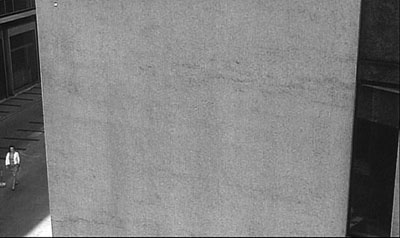
From aggregator Movie MMORPG:
Welcome to a sophisticated world teetering on the edge of decadence. Get hammered on Italian cocktails. Fight your way out of a hospital jammed with nymphos. Cheat on your wife. Seduce a married man. Wander through the streets and stare at gushing water. Have you got what it takes to survive a day in LaNotteCity? You’ll get hooked, since the endgame is always inconclusive!
As it’s currently discussed, transmedia storytelling has two uncontroversial components and one rare but intriguing one.
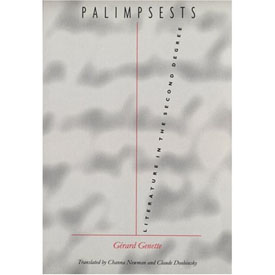 First, the term implies that a story is spread among a series of discrete “texts.” This “hypernarrative” idea was explored with taxonomic zeal by Gérard Genette in his 1982 book Palimpsests. His taxonomy of storytelling is worth considering a little here because he anticipated several possibilities we’re seeing now. Many of his categories have parallels in cinema, but I’ll stick to his domain, literature.
First, the term implies that a story is spread among a series of discrete “texts.” This “hypernarrative” idea was explored with taxonomic zeal by Gérard Genette in his 1982 book Palimpsests. His taxonomy of storytelling is worth considering a little here because he anticipated several possibilities we’re seeing now. Many of his categories have parallels in cinema, but I’ll stick to his domain, literature.
Novels and short stories feed off other novels and short stories. Obvious examples are parodies, pastiches, sequels, and continuations (sequels not written by the original author). Genette also considers what he calls the “transposition,” a very roomy category that’s of particular interest to us.
Transpositions are things like translations, rewritings, and literary adaptations, as when a novel becomes a play. A transposition also occurs when the original text is pruned or compressed, as in abridged versions of Don Quixote or Moby-Dick. At the other quantitative extreme is what Genette calls augmentation. Here, the derivative work expands the original, either in style (three sentences replace one) or narrative material (extra scenes or plots).
Yet another sort of transposition occurs when the story events in the original are rendered through alternative literary techniques. Charles Lamb retells Ulysses’ adventures in a different order than Homer does, and someone could rewrite the events of Madame Bovary in first person, from Charles’ point of view. When Genette was writing, he had to reach for some esoteric examples, but nowadays we have others. Alice Randall’s The Wind Done Gone (2001) retells Gone with the Wind from the point of view of a slave on Tara. The novel Wicked is a large-scale example, as is Tom Stoppard’s Rosenkrantz and Guildenstern Are Dead.
All these examples of hypernarrative operate within a single medium. The second condition of transmedia storytelling is, of course, that it crosses media. Genette considers drama and written literature to be all part of the same medium, but if you don’t, then novels turned into plays, like Les Miserables, would count as transfers across media.
In this sense, transmedia storytelling is very, very old. The Bible, the Homeric epics, the Bhagvad-gita, and many other classic stories have been rendered in plays and the visual arts across centuries. There are paintings portraying episodes in mythology and Shakespeare plays. More recently, film, radio, and television have created their own versions of literary or dramatic or operatic works. The whole area of what we now call adaptation is a matter of stories passed among media.
What makes this traditional idea sexy? I think it’s a third, less common component that Henry has spotlighted. Some transmedia narratives create a more complex overall experience than that provided by any text alone. This can be accomplished by spreading characters and plot twists among the different texts. If you haven’t tracked the story world on different platforms, you have an imperfect grasp of it.
I can follow Conan Doyle’s Sherlock Holmes stories well without seeing The Seven Percent Solution or The Private Life of Sherlock Holmes. These pastiches/continuations are clearly side excursions, enjoyable or not in themselves and perhaps illuminating some aspects of the original tales. But according to Henry, we can’t appreciate the Matrix trilogy unless we understand that key story events have taken place in the videogame, the comic books, and the short films gathered in The Animatrix. The Kid in The Matrix Reloaded makes cryptic reference to finding Neo by fate, but only those who have watched the short devoted to him knows what that means. If Sherlock pastiches are parasites, the texts around The Matrix exist in symbiosis, giving as much as they take.
This strategy differentiates the new transmedia storytelling from your typical franchise. In most film franchises, the same characters play out their fixed roles in different movies, or comic books, or TV shows. You need not consume all to understand one. But Henry envisages the possibility of creating a whole that is greater than its parts, a vast narrative experience that doesn’t end when the book’s last page is turned or the theatre lights come up. His idea seems to be echoed in Will Wright’s suggestion:
It’s a fractal deployment of intellectual property. Instead of picking one format, you’re designing for one mega-platform. . . . We’ve been talking about this kind of synergy for years, but it’s finally happening.
Stimulating as this prospect is, it remains rare. The Matrix is perhaps the best example, but Henry suggests that it’s also an extreme instance: “For the casual consumer, The Matrix asked too much. For the hard-core fan, it provided too little” (p. 126). More common is a Genette-style transposition, in which the core text—usually the movie—is given offshoots and roundabouts that lead back to it. As I understand it, the Star Wars novels operate under the injunction that although they can take a story situation as the basis for a new plot, in the end that plot has to leave the films’ story arc unchanged. Similarly, websites with puzzles, games, clues, and other supplementary material tend to be subordinate to the film, planting hints and foreshadowings (The Blair Witch Project, Memento). Alternatively, the A. I. website provided a largely independent story world that impinged on the movie’s action only slightly.
The “immersive” ancillaries seem on the whole designed less to complete or complicate the film than to cement loyalty to the property, and even recruit fans to participate in marketing. It’s enhanced synergy, upgraded brand loyalty.
For the most part Hollywood is thinking pragmatically, adopting Lucas’ strategy of spinning off ancillaries in ways that respect the hardcore fans’ appreciation of the esoterica in the property. Caranicas quotes Jeff Gomez, an entrepreneur in transmedia storytelling, saying that for most of his clients “we make sure the universe of the film maintains its integrity as it’s expanded and implemented across multiple platforms.” It would seem to be a strategy of expanding and enriching fan following, and consequent purchases.
As best I can tell, then, in borrowing this academic idea, the industry is taking the radical edge off. But is that surprising?
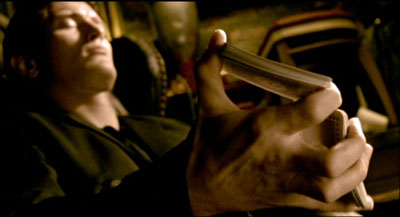
Excerpt from www.ballsup.net
What a bloody week. Just now had a chance to update things. Fact is, it’s me last post. Luckily I let that cellphone drop and grabbed the satchel just before it fell into the Thames. Me and the crew are now packing for Bimini, ready for living large but in a rush becuz Big Chris may be looking for us. Hang on, must upload now, someone’s knocking at me d
Henry’s chapter in Convergence Culture grants that “relatively few, if any, franchises achieve the full aesthetic potential of transmedia storytelling—yet” (p. 97). Perhaps that hopeful “yet” will be fulfilled outside Hollywood? In the realm of the avant-garde, Matthew Barney has elaborated his own private mythology, dispersed among artifacts and hard-to-see films. In this he followed Joseph Beuys and Salvador Dalí. But you could argue that these artists really weren’t telling an overarching story. They were creating secular cults, full of arcana that only the pious initiates of Gallery Culture could grasp.
What about something more accessible? This month in Filmmaker magazine, Lance Weiler has suggested that indie filmmakers embrace the concept of transmedia storytelling (though he doesn’t use the term). Weiler argues that the explosion of digital technology has so transformed narrative that the filmmaker has to keep up. Instead of creating a script, with its genre formulas and three-act layout, the filmmaker should generate a bible, which plots an ensemble of characters and events that spills across film, websites, mobile communication, Twitter, gaming, and other platforms. The filmmaker designs “timelines, interaction trees, and flow charts” as well as “story bridges that provide seamless flow across devices and screens.”
Weiler doesn’t offer any specific examples apart from his Head Trauma, a horror feature accompanied by an alternate reality game that involved mobile and online access. You can watch his account of the “evolution of storytelling” here, where he and Ted Hope speculate about transmedia storytelling as offering economic help to filmmakers, reclaiming authorship from corporations, and promoting new relations with the audience.
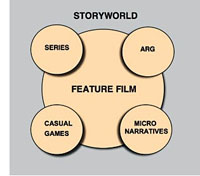 Hope and Weiler raise many fascinating questions about the prospects for multiplatform storytelling. At times, though, it seems that they accept the studio strategy of putting the film at the center of a multimedia ensemble. The diagram accompanying Weiler’s article illustrates that. It’s hard to think outside the franchise model, even if we want to denounce Hollywood for being stuck in an outdated commitment to the theatrical feature as foundational “content.”
Hope and Weiler raise many fascinating questions about the prospects for multiplatform storytelling. At times, though, it seems that they accept the studio strategy of putting the film at the center of a multimedia ensemble. The diagram accompanying Weiler’s article illustrates that. It’s hard to think outside the franchise model, even if we want to denounce Hollywood for being stuck in an outdated commitment to the theatrical feature as foundational “content.”
We should welcome experimentation, so I wish Hope, Weiler, and other creators well. But I think we ought to recognize some problems with expanding story worlds in these directions.
For one thing, most Hollywood and indie films aren’t particularly good. Perhaps it’s best to let most storyworlds molder away. Does every horror movie need a zigzag trail of web pages? Do you want a diary of Daredevil’s down time? Do you want to look at the Flickr page of the family in Little Miss Sunshine? Do you want to receive Tweets from Juno? Pursued to the max, transmedia storytelling could be as alternately dull and maddening as your own life.
Sure, somebody might go for it. Kristin points out, though, that people who would be motivated to follow up on all the transmedia bits of a spreadeagled narrative are people who would identify themselves as part of a fandom. There aren’t that many films/franchises that generate profoundly devoted fans on a large scale: The Matrix, Twilight, Harry Potter, The Lord of the Rings, Star Wars, Star Trek, maybe The Prisoner. These items are a tiny portion of the total number of films and TV series produced. It’s hard to imagine an ordinary feature, let alone an independent film, being able to motivate people to track down all these tributary narratives. There could be a lot of expensive flops if people tried to promote such things.
Consider a deeper point. Transmedia storytelling in the radical sense is posited as an active, participatory experience. Henry suggests that fans will race home from the multiplex to study up on iconography in The Matrix. Weiler’s article is accompanied by a hierarchy that lists “layers of interactivity.” The most superficial is “Passive Viewing,” defined as “Sit back and watch.” (Here Weiler parts company with Henry, who doesn’t consider ordinary viewing passive.) Further along are layers involving social networking, playing games, discussing or interacting with characters, finding hidden content, and even creating elements of the story world.
But it seems to me that film viewing is already an active, participatory experience. It requires attention, a degree of concentration, memory, anticipation, and a host of story-understanding skills. Even the simplest story gears up our minds. We may not notice this happening because our skills are so well-practiced; but skills they are. More complicated stories demand that we play a sort of mental game with the film. Trying to guess Hitchcock or Buñuel’s next twist can engross you deeply. And the very genre of puzzle films trades on brain strain, demanding that the film be watched many times (buy the DVD) for its narrational stratagems to be exposed. Films are interactive in the way a board game is: each move blocks certain possibilities, another anticipates what you’re going to do (mentally).
Moreover, how the ancillary texts add to the film is a crucial matter. No narrative is absolutely complete; the whole of any tale is never told. At the least, some intervals of time go missing, characters drift in and out of our ken, and things happen offscreen. Henry Jenkins suggests that gaps in the core text can be filled by the ancillary texts generated by fan fiction or the creators. But many films thrive by virtue of their gaps. In Psycho, just when did Marion decide to steal the bank’s money? There are the open endings, which leave the story action suspended. There are the uncertainties about motivation. In Anatomy of a Murder, did Lieutenant Manion kill his wife’s rapist in cold blood? Likewise, being locked to a certain character’s range of knowledge is the source of powerful emotional effects. We want to make the discoveries along with the character, be he Philip Marlowe or Travis Bickle.
The human imagination abhors a vacuum, I suppose, but many art works exploit that impulse by letting us play with alternative hypotheses about causes and outcomes. We don’t need the creators to close those hypotheses down. Indeed, you can argue that one of the contributions of independent film has been the possibility of pushing the audience toward accepting plots that don’t fit clear-cut norms. That innovation shrinks if we can run home to get background material online. By following the franchise logic, indie films risk giving up mystery.
At this point someone usually says that interactive storytelling allows the filmmaker to surrender some control to the viewer, who is empowered to choose her own adventure. This notion is worth a long blog entry in itself, so I’ll simply assert without proof: Storytelling is crucially all about control. It sometimes obliges the viewer to take adventures she could not imagine. Storytelling is artistic tyranny, and not always benevolent.
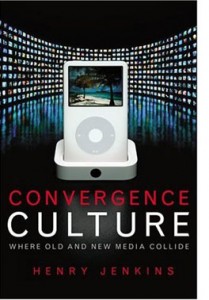 Another drawback to shifting a story among platforms: art works gain strength by having firm boundaries. A movie’s opening deserves to be treated as a distinct portal, a privileged point of access, a punctual moment at which we can take a breath and plunge into the story world. Likewise, the closing ought to be palpable, even if it’s a diminuendo or an unresolved chord. The special thrill of beginning and ending can be vitiated if we come to see the first shots as just continuations of the webisode, and closing images as something to be stitched to more stuff unfolding online. There’s a reason that pictures have frames.
Another drawback to shifting a story among platforms: art works gain strength by having firm boundaries. A movie’s opening deserves to be treated as a distinct portal, a privileged point of access, a punctual moment at which we can take a breath and plunge into the story world. Likewise, the closing ought to be palpable, even if it’s a diminuendo or an unresolved chord. The special thrill of beginning and ending can be vitiated if we come to see the first shots as just continuations of the webisode, and closing images as something to be stitched to more stuff unfolding online. There’s a reason that pictures have frames.
In between opening and closing, the order in which we get story information is crucial to our experience of the story world. Suspense, curiosity, surprise, and concern for characters—all are created by the sequencing of story action programmed into the movie. It’s significant, I think, that proponents of hardcore multiplatform storytelling don’t tend to describe the ups and downs of that experience across the narrative. The meanderings of multimedia browsing can’t be described with the confidence we can ascribe to a film’s developing organization. Facing multiple points of access, no two consumers are likely to encounter story information in the same order. If I start a novel at chapter one, and you start it at chapter ten, we simply haven’t experienced the art work the same way. This isn’t to say, of course, that each of us has an identical experience of a movie. It’s just that our individual experiences of the film overlap to an extent that allows us to talk about the patterning of the story under our eyes.
In correspondence with me, Henry suggests that transmedia storytelling may work best with television because of the serialized format; different people hop aboard at different points. I’d add that television’s installment-based storytelling, operating in the lived time of the audience, allows time for viewers to explore or create media offshoots. The installment-based nature of serial TV poses intriguing aesthetic problems of continuity, coherence, and memory. (See Jason Mittell’s essay on this matter.) For films, however, which are typically designed to be consumed in one sitting, multiple points of entry will tend to make plot patterns less clearly profiled.
If transmedia storytelling is difficult to apprehend for the viewer, it also makes critical analysis and evaluation much more difficult. How might we analyze overarching patterns of multiplatform plotting in The Matrix? True, one can itemize the inputs and decipher the citations, but it’s very hard to show how they work together, how they unfold, what it all adds up to—except to note that different people will encounter information bits at different times and with different states of knowledge.
Gap-filling isn’t the only rationale for spreading the story across platforms, of course. Parallel worlds can be built, secondary characters can be promoted, the story can be presented through a minor character’s eyes. If these ancillary stories become not parasitic but symbiotic, we expect them to engage us on their own terms, and this requires creativity of an extraordinarily high order.
Henry Jenkins suggests that for big-budget projects, this means finding unusually gifted collaborators. In the indie sector, the obstacles are even more considerable. Whether the result is Wendy and Lucy or Goodbye Solo, creating a first-rate feature-length movie takes tremendous talent, sweat, and resourcefulness. It is immensely harder to create a story universe that sustains the same intensity and quality across platforms. True, you can sprinkle clues and cryptic references among websites and YouTube shorts. The formulas of genre (horror, mystery) help you generate shock effects and mystification in teaser trailers. Appeal to stock characterization helps you mount a “realistic” Second Life life. But building a vast, sturdy world teeming with distinctive characters, unpredictable plotting, and human resonance is an immense task.
We await our multimedia Balzac. In the meantime, maybe indie filmmakers should settle for trying to be Chekhov.
http://tinyurl.com/scarkiller
Debbie, sorry 2 hav left SOOOO suddenlike. am @ Gila flats = cactus + varmnts. LOL with Blankethead!!! :-/
Uncl Ethan
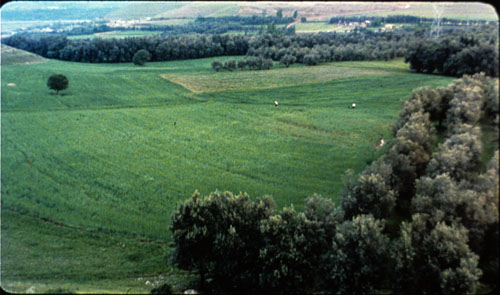
Thanks to Henry Jenkins for comments on this entry. He recommends that interested readers have a look at Geoffrey Long’s 2007 MA thesis on the Jim Henson company, available, along with many other MIT projects, here. Thanks also to Kristin and Jeff Smith for suggestions, and to Janet Staiger for correcting my memory and calling attention to Dennis Bound’s book on “transmedia poetics” as applied to Perry Mason.
PS 11 Sept: Henry Jenkins has responded to my entry, with the first of three installments starting here.













